2nd Dohara: "As[i] Kripaan Dhaaraadharee..."
![2nd Dohara: "As[i] Kripaan Dhaaraadharee..."](/content/images/size/w960/2022/03/138648973_3644116642334622_8805945309210584488_n.jpg)
Dhan Dhan Kalgidhar Maharaj, Chittey Baja Wale Paatshah, Neela-Ghorh Asvaar, Sarbans Daani, Dasmesh Pita Ji Sri Guru Gobind Singh Sahib Ji Maharaj –
ਦੋਹਰਾ (Doharaa)
ਅਸਿ ਕ੍ਰਿਪਾਨ ਧਾਰਾਧਰੀ ਸੈਫ ਸੂਲ ਜਮਦਾਢ ॥
As[i] Kripaan Dhaaraadharee Saif Sool Jamdhaatd
ਕਵਚਾਂਤਕ ਸਤ੍ਰਾਂਤਕਰ ਤੇਗ ਤੀਰ ਧਰਬਾਢ ॥੨॥
Kavachaa[n]thak Sathraa[n]thakar Thaeg Theer Dharbaatd
–
This is the 2nd Doharaa, please see previous sections for relevant context
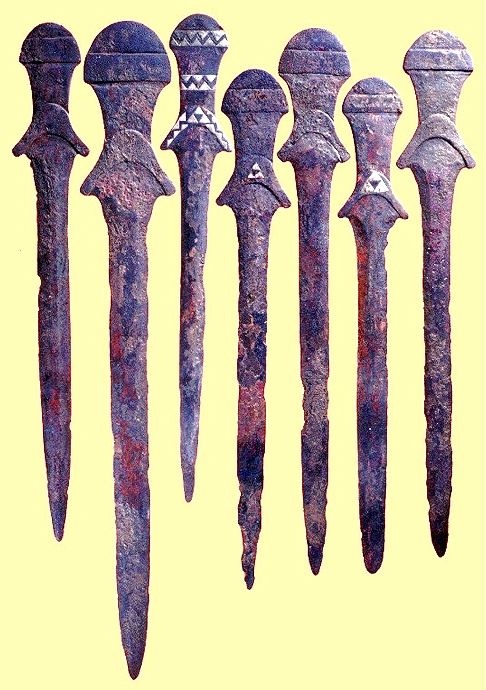
In the last section we mentioned that terms like Us[i], Talwaar, Kharag, Tegh, Shamshir, etc. can be general terms for swords. Maharaj repeats these names multiple times and this allows us to look at swords from all over the world. There are certain shastars mentioned in ancient theology which we do not unfortunately have access to today but also famous shastars which are known for their strength, design, or story related to it.
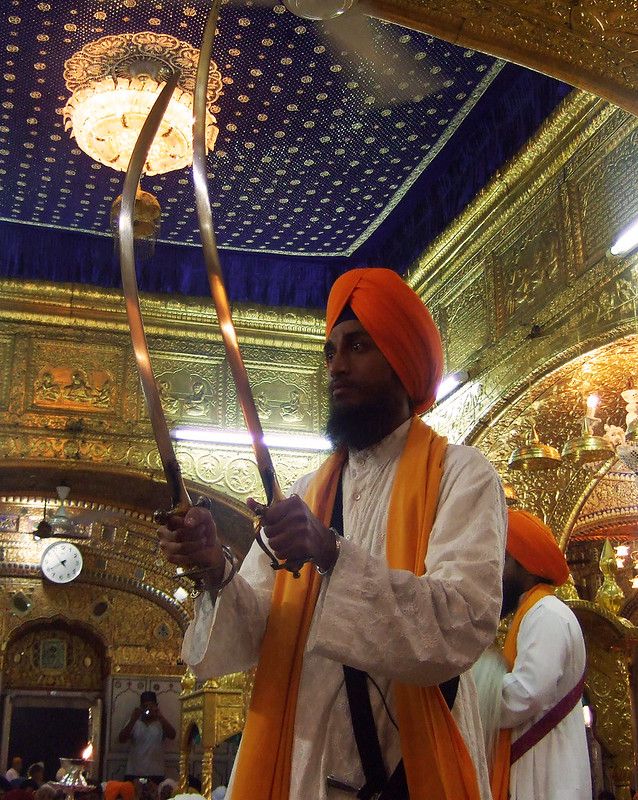
There are multiple references to the term 'Kirpaan' in Gurbani. Dhan Guru Ram Das Ji give us updesh in Raag Kaanraa where we see the use of Kirpaan:
ਮਤਿ ਗੁਰਮਤਿ; ਸੁਨਿ ਜਸੁ ਕਾਨ ॥
Math[i] Gurmath[i] Sun[i] Jas[u] Kaan
Accept the Guru's Mindset as your mindset, listen to Vaheguru's Praises with your ears
ਹਰਿ ਹੋ; ਹੋ ਕਿਰਪਾਨ ॥੧॥ ਰਹਾਉ ॥
Har[i] Ho Ho Kirpaan
Vaheguru is present & Vaheguru is the Graceful
(Ang 1297)
When the talwar comes into the hand of the Sikh, then it is referred to as a Kirpaan because the weapon is used as Kirpaa/Grace in Degh-Tegh Fateh! Protecting the defenseless and fighting wars of righteousness. Dhan Dhan Guru Gobind Singh Ji Maharaj explain to us Vaheguru's destructive power:
ਕ੍ਰਿਪਾਣ ਪਾਣ ਧਾਰੀਯੰ ॥
KripaaN PaaN Dhhaareey[ng]
Vaheguru adorns the Kirpaan
ਕਰੋਰ ਪਾਪ ਟਾਰੀਯੰ ॥
Karor Paap Taareey[ng]
Millions of sins are avoided!
(Bachithar Naatak)
When you remember death and how precious human life is, then you avoid wasting breaths by committing bad deeds.
Traditionally, Kirpaans are large swords not daggers as we see them today. So where did this change happen. In the line of historical events, the Khalsa was always shastardhari to the teeth. When the British Raaj took over Punjab from the remnants of the Sikh empire then the Khalsa was de-armed. There was a systematic means to remove them.
The Indian Arms Act of 1878 (XI) made it so that no one could own arms unless permitted by the British Government. Under Section II.5, the following is written: "No person shall manufacture, convert or sell, or keep, offer or expose for sale, any arms, ammunition or military stores, except under a licence and in the manner and to the extent permitted thereby". Under the Section I.4 the definition of arms is provided as: " 'arms' includes- (i) clasp-knives the blades of which are pointed and exceed three inches in length; (ii) knives, with pointed blades rigidly affixed, or capable of being rigidly affixed, to the handle, and measuring in all over five inches in length which are not intended exclusively for domestic, agricultural or industrial purposes: provided that it shall be presumed until the contrary is proved that knives of this description are not intended exclusively for such purposes; (iii) knives of such other kinds as the President of the Union may, by notification, prescribe; and (iv) fire-arms, bayonets, swords, daggers, spears, spear-heads and bows and arrows, also cannon and parts of arms, and machinery for manufacturing arms" (Myanmar Law Library; laws still the same as rest of South Asia, can find this in Indian & Pakistani legal documents).
There was a huge struggle after the 1878 act, Kirpan regulation differed in various regions of South Asia and the regulations relaxed. This changed in the 1920s: 'In February, 1921, the Deputy Commissioner of Jullundur issued an order requiring the local manufacturers not to manufacture Kirpans of greater length than nine inches'. There were Kirpaan factories raided during this time and a lot of Sikhs jailed for keeping a Kirpan. One hundred years later, we haven't moved forwards as a result of that legislation. To read more about the Kirpan Morcha, please see this 2016 Haryana State Court case file: https://indiankanoon.org/doc/178477505/.
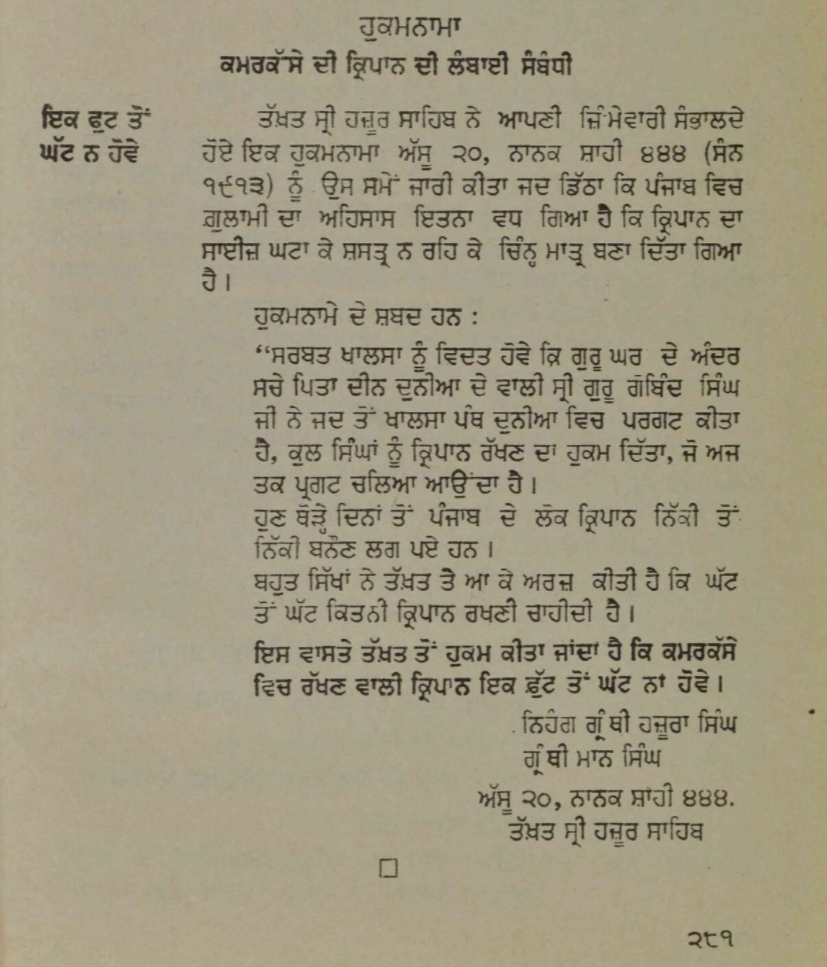
Over the last century, Kirpan legislation around the world is based off the British small dagger standard which devolved in the early 1900s.
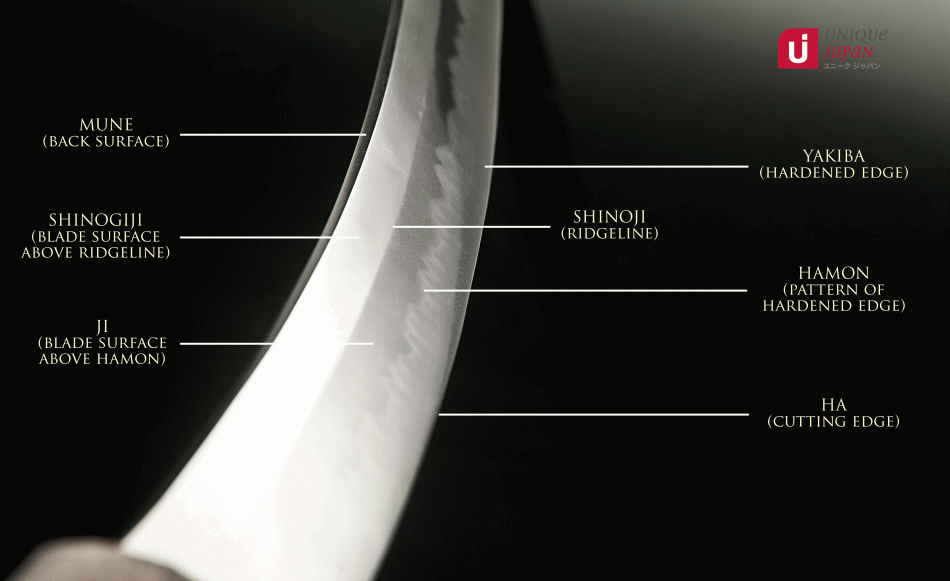
Maharaj refers to a large scale of different weapons here because Dhhaaraadharee refers to any weapon with a sharp edge. Outside of sharpening a blade, there are many things we should consider when obtaining shastars: the metal used, the shape of the shastar, and how it was forged.
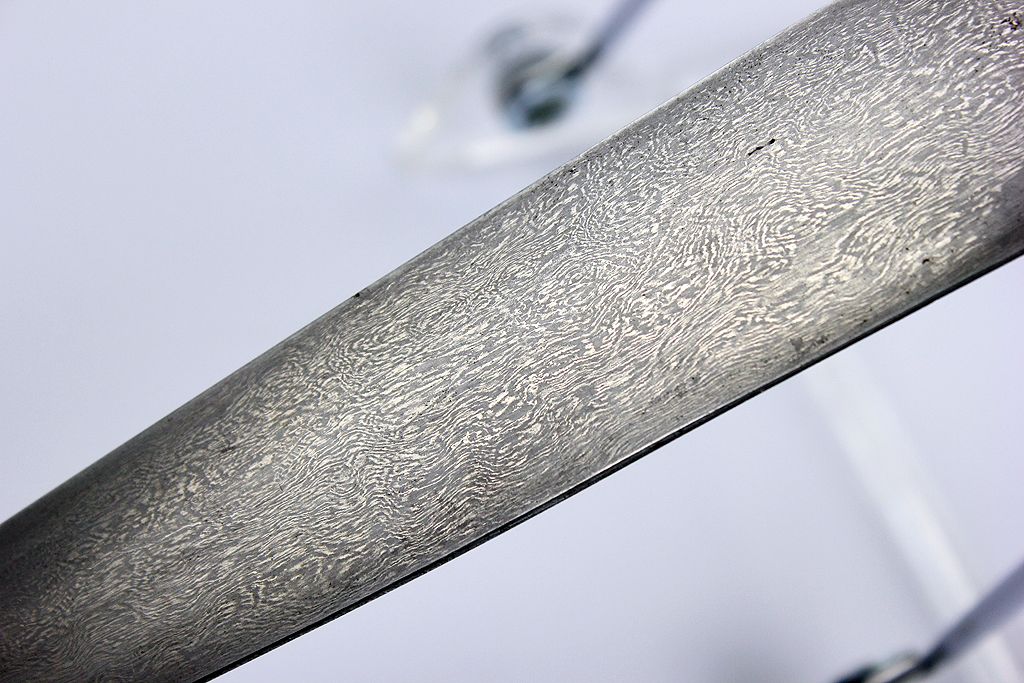
Wootz steel is the most famous type of metal/alloy when it comes to puratan swords. It is a combination of just the right amount of carbon added to iron. This steel was used in swords by artisans in the Damascus region of the Middle East. The wavy pattern it produced, became known as the Damascus pattern. These shastars were known to be really sharp but still lightweight. Modern damascus can be defined in different ways. Sometimes, you will just see a cheap coating on top of a shastar just for aesthetics. In most proper Damascus shastars, the metals will be folded or twisted to create the signature wavy pattern design. With the help of technology, we have stronger metal alloys available to us today but the handcrafted way is preferred by many.
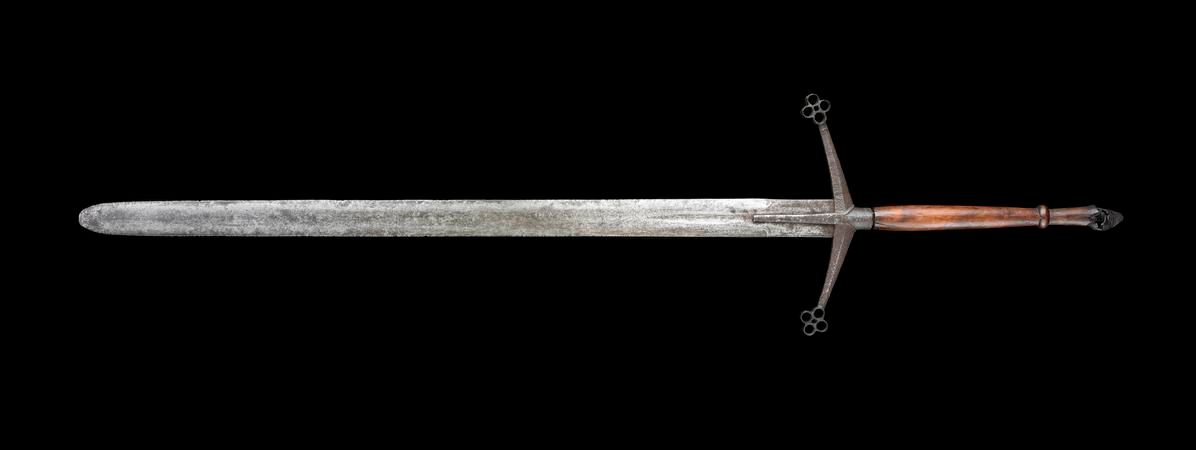
Saif can be used as a general term for a straight sword. European Broadswords also fall into this category.

After leaving Anandpur Sahib & the Shaheedi of the Dhan Baba Ajeet Singh Ji, Dhan Baba Jujhar Singh Ji, Pyara Bhai Himmat Singh, Pyara Bhai Mohkam Singh, Pyara Bhai Sahib Singh and other respected Gursikhs – Dhan Dhan Sri Guru Gobind Singh Ji Maharaj slept on the thorn-filled, rocky terrain of Machhiwara Jungle. Maharaj refers to the Sool in terms of a pitcher made of spearheads:
ਮਿਤ੍ਰ ਪਿਆਰੇ ਨੂ; ਹਾਲੁ ਮੁਰੀਦਾਂ ਦਾ ਕਹਣਾ ॥
Mithr Piaarae Noo Haal[u] Mureedhaa[n] Dhaa KahaNaa
Tell the Beloved Vaheguru, the State of His Disciples
ਤੁਧੁ ਬਿਨੁ ਰੋਗੁ ਰਜਾਇਯਾ ਦਾ ਓਢਣ; ਨਾਗ ਨਿਵਾਸਾ ਦੇ ਰਹਣਾ ॥
Thudh[u] Bin Rog[u] Rajaaeeaa Dhaa OtdaN naag nivaasaa Dhae RahaNaa
Without You Maharaj, it is like wearing blankets riddled with disease & living with snakes...
ਸੂਲ ਸੁਰਾਹੀ ਖੰਜਰੁ ਪਿਯਾਲਾ; ਬਿੰਗੁ ਕਸਾਈਯਾ ਦਾ ਸਹਣਾ ॥
Sool Suraahee Kha[n]jar[u] Piyaalaa Bi[n]g[u] Kasaaeeaa Dhaa SahaNaa
[Without You Maharaj] it is like having a pitcher made from spearheads and a goblet of daggers, tolerating the gestures of butchers
ਯਾਰੜੇ ਦਾ ਸਾਨੂ ਸਥਰੁ ਚੰਗਾ; ਭੱਠ ਖੇੜਿਆ ਦਾ ਰਹਣਾ ॥੧॥੧॥੬॥
Yaararhae Dhaa Saanoo Sathhar[u] Cha[n]gaa Bhatt Kherhiaa Dhaa RahaNaa
We prefer our Beloved's Earth [to sleep on] [rather than] living in the burning comfort of towns
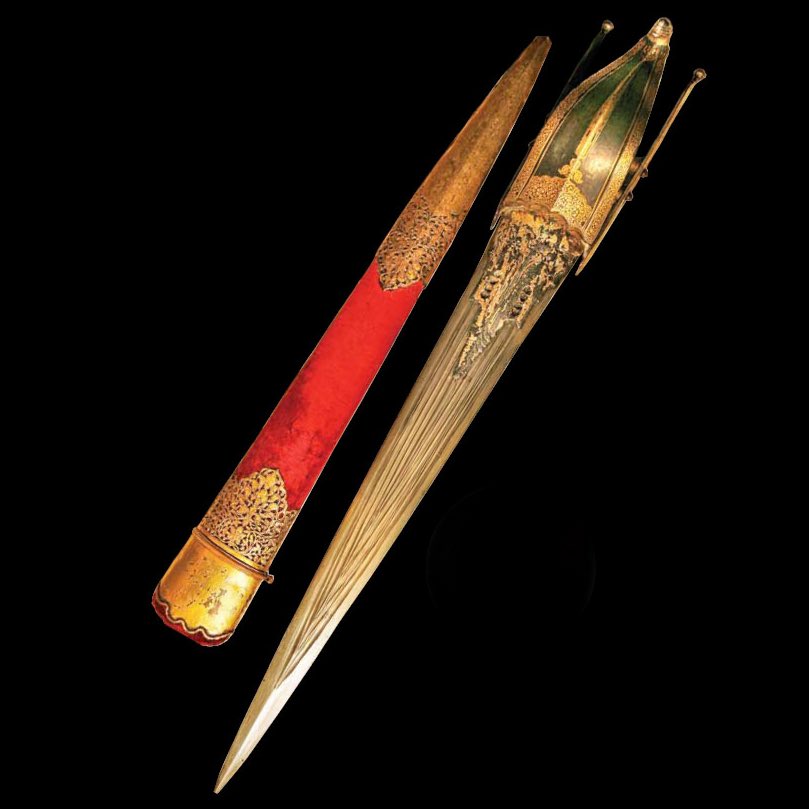
Jam-Dhaarh literally means the Molars of the Messengers of Death.
In a Kabitt in Akaal Ustat, Maharaj refers to the Spiritual Truth about our existence:
ਕਾਲ ਕੇ ਬਨਾਇ, ਸਬੈ ਕਾਲ ਹੀ ਚਬਾਹਗੇ ॥
Kaal Kae Banaae[i] Sabai Kaal Hee Chabaahgae
Being made of mortal [temporary 5 elements], everything will be chewed on by death [nothing can live forever in this manifestation]
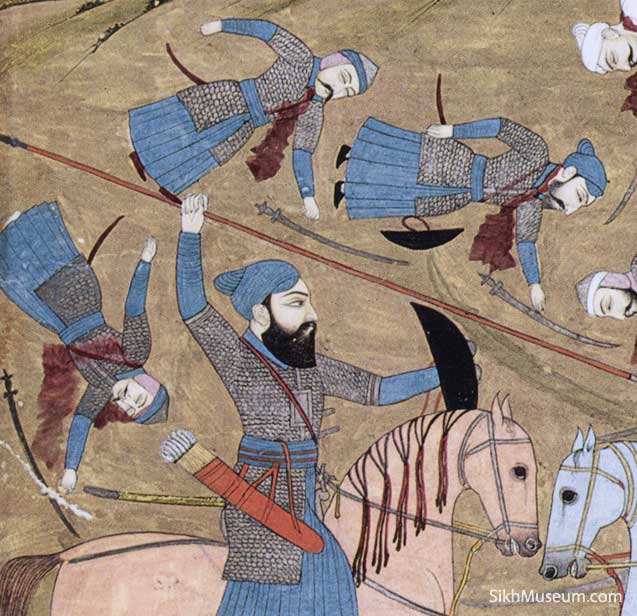
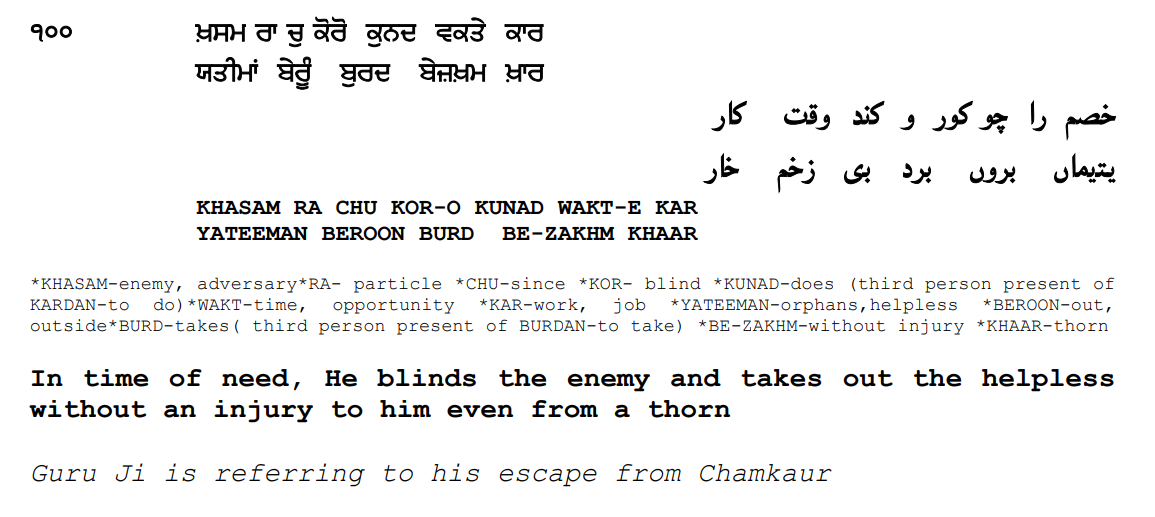
Guru Sahib refers to Aurangzeb & his army as the Enemy in Zafarnama. Akaal Purakh's Fauj still exists. The tyrannical Mughal government & army do not exist anymore. Vaheguru is the Shathroo-Anth-Kar: The One that ends the enemy. This refers to any weapon that can destroy the opposing force or the spiritual opposing force (5 Vices).
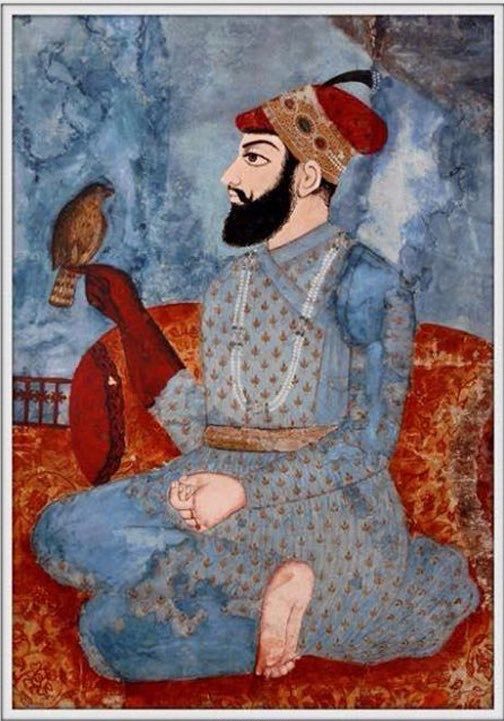
Thaeg/Teg is another umbrella term for swords (not to be confused with Teghaa, a specific shastar we will go over soon)
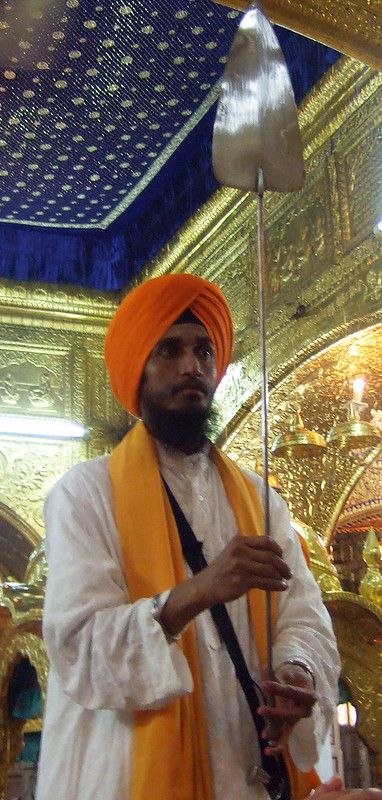
There are a lot of types of theers and a lot of history behind them. This will be discussed in the future.

The famous Samurai swords are known for their strong yet sharp steel. Japanese steel is strengthened through a process of folding the metal until impurities are removed. Most people know the Katana sword but there are many others. Katana is a longer sword (about 23-28 inches long). The Wakizashi is 1-2 ft long. The Tanto is a small dagger size under 1 ft. All of these swords are made the same way and were used by Samurai.
–
If we reflect on this section, shastars have so many different aspects to love: Guru Sahib's History, Gursikh History, World History around Shastars, the technical aspects of making a shastar, location of the shastar, the action of using a shastar & it's power/strength, the aesthetics, among many other factors to love shastars!

